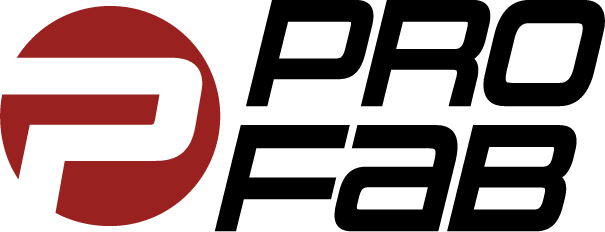
Blog
Standardization vs. Flexibility: Pet Food Conveyance Equipment
In the competitive world of pet food manufacturing, choosing the right conveyance equipment is crucial for maintaining efficiency, ensuring product quality, and adapting to evolving consumer demands. Two key approaches to this decision—standardization and flexibility—offer distinct advantages and challenges.
Read on to learn more about standardization vs. flexibility in pet food conveyance.
THE CASE FOR STANDARDIZING PET FOOD CONVEYANCE EQUIPMENT
Standardizing conveyance equipment across multiple facilities can transform operations in several ways. By adopting consistent equipment, manufacturers can reap numerous benefits:
- Streamlined Operations: Consistent equipment across facilities simplifies production, allowing teams to produce the same product with predictable outcomes shift after shift. This consistency enhances efficiency and minimizes operational hiccups.
- Maintenance, Repair, and Operations (MRO) Savings: Using the same equipment means maintenance teams only need to master one system and stock fewer spare parts. This reduces complexity, saves costs, and ensures faster repairs when issues arise.
- Cost Efficiency: Bulk purchasing of standardized equipment often leads to cost savings, while uniform processes reduce training time for operators and maintenance staff.
- Product Quality: Standardized conveyance systems help maintain consistent handling processes, ensuring uniform quality, especially for high-volume products like dry kibble.
LEVERAGING PRODUCTION FLEXIBILITY
![]()
Determining whether to prioritize standardization or flexibility—and to what degree—depends on several factors:
- Production Scale: Standardization is often the most efficient choice for high-volume, stable product lines like dry kibble. These products benefit from consistent processes and economies of scale.
- Product Variety: Flexibility is key for niche or emerging products. Testing new products with adaptable equipment or through co-manufacturers minimizes risk while gauging market demand.
- Market Goals: Manufacturers with a broad portfolio or ambitions to innovate should prioritize a process design that emphasizes flexibility so they can remain agile and competitive. Those focused on flagship products can leverage standardization to maximize efficiency.
If the production line includes equipment with multiple capabilities and scaling capacities, the company can remain flexible while standardizing equipment. For example, vibratory conveyors can be utilized to convey kibble, but if needs change, they could also be used for screening and laning applications with a pan changeout.
Regardless of the equipment included in the facilities, committing to standardized systems requires upfront planning and a long-term commitment to specific product lines. If market demands change, retooling or replacing equipment or implementing a new line can be costly and time-consuming. In an industry experiencing extreme growth (like pet food), it’s important to consider an overall process design that allows for future developments.
STRIKING THE RIGHT BALANCE
In recent years, the pet food industry has seen significant demand for new formats and specialized products, such as raw food, freeze-dried treats, boutique baked treats, and customized diets tailored to specific health needs. This growing diversity in product offerings highlights the need for manufacturers to carefully evaluate how equipment characteristics align with each product type’s unique requirements.
The decision between standardization and flexibility is not binary. Instead, a balanced approach—standardizing core systems for high-volume products while maintaining flexibility for niche or innovative offerings—often yields the best results.
| Product/Market Characteristics | Recommended Equipment Strategy | Benefits |
| High-Volume, Established Products – Dry Kibble and Feed | Standardized conveyance systems across multiple lines and facilities. Systems include a range of solutions, including belt, vibratory, horizontal motion conveyors, and bulk handling equipment. | Standardized systems improve efficiency, product consistency, and reduce the total cost of ownership. |
| Novelty, Small Batch Products – Baked Pet Treats | Gentle handling from equipment like vibratory and horizontal motion conveyors. Equipment is configured to lower production rates and implemented in secondary/test areas or with co-manufacturers. | Gentle transferring maintains product integrity and minimizes damage and waste. |
| Up-and-Coming Products – Frozen & Raw Pet Food | Sanitary equipment, including screw augers, RTE dumpers, vibratory and horizontal motion conveyors. Equipment is designed to scale up as demand continues to grow. | Sanitary designs with open frames, maximum accessibility, minimal moving parts and toolless maintenance improve sanitation, validation, and food safety. |
OPTIMIZE YOUR PET FOOD PRODUCTION LINE WITH PFI CONVEYORS
At PFI, we specialize in providing pet food conveyance solutions that meet the unique needs of manufacturers. Whether you’re looking to streamline operations with belt and vibratory conveyors or implement flexible systems with bulk handling and value-added applications, we’re here to help.
By understanding your production goals, product portfolio, and market demands, PFI can help you design the perfect conveyance strategy to keep your operations efficient, innovative, and competitive.
Quicklinks
© 2024 PFI. ALL RIGHTS RESERVED. | Privacy Policy | Terms and Conditions




